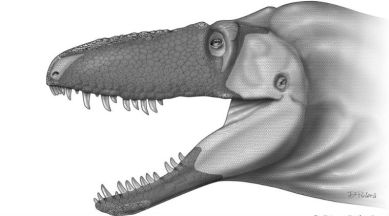New species of Tyrannosaur sensitive, claims study
Scientists have identified a new species of tyrannosaur dinosaur and found their face was covered in a scaly protective layer with a high degree of tactile sensitivity, similar to crocodiles.

Scientists have identified a new species of tyrannosaur dinosaur and found their face was covered in a scaly protective layer with a high degree of tactile sensitivity, similar to crocodiles.
“They would not be able to interact with their environment with their hands the way mammals do – find food, build nests, tend to eggs and young. In order to do these things, Daspletosaurus needed to use its feet or head,” said Moore. “The discovery and analysis of the tyrannosaur shows that the dinosaur had a developed face sensitivity similar to the sensitivity in our finger tips, suggesting it could use its snout for all those complex ecological interactions, similar to the way crocodiles do today,” Moore said.
Also Read: Evidence of first live birth found in relative of the dinosaur
The study also provides new information about the mode of evolution and life appearance of tyrannosaurs, specifically the face. Researchers found evidence for a rare, nonbranching type of evolution in tyrannosaurs and that tyrannosaurs had scaly, lipless faces and a highly touch-sensitive snout.”Daspletosaurus horneri was the youngest, and last, of its lineage that lived after its closest relative, D torosus, which is found in Alberta, Canada,” said Thomas Carr of Carthage College in the US.
“The geographic proximity of these species and their sequential occurrence suggests that they represent a single lineage where D torosus has evolved into D horneri,” Carr said. The findings were published in the journal Scientific Reports.